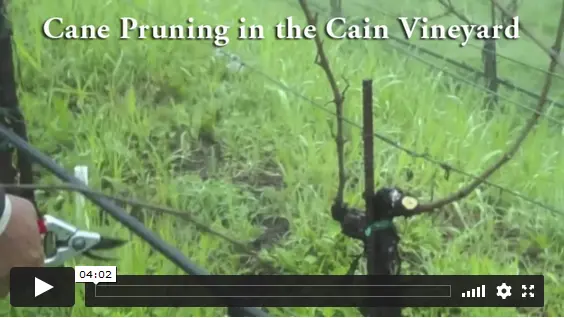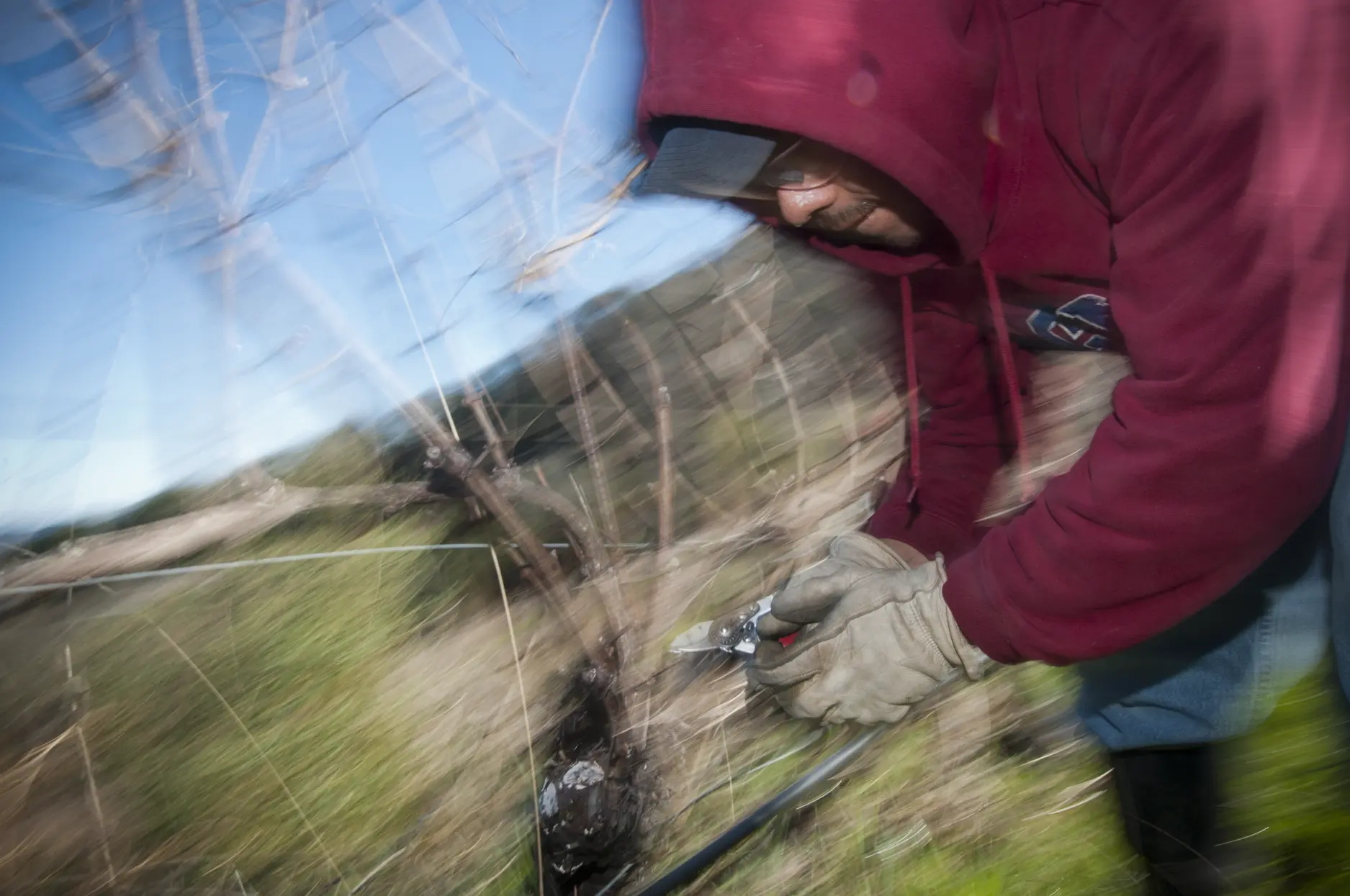
“There is nothing natural about pruning—it is quintessentially human, and thus, cultural.” —Chris Howell
There is nothing natural about pruning—it is quintessentially human and thus, cultural. Most people seem to view the removal of the accumulation of annual growth as something like housecleaning or yardwork—removing clutter, creating some semblance of order—kind of like mowing the lawn or weed-whacking. So it is understandable that they view it as manual labor of the most basic kind, the sort for which one would hire temporary labor—the guys you see standing on the street corner, waiting for a job. Unfortunately, most “people,” applies not only to tourists, but also to many grape growers, and not only in the New World.
Because, contrary to most people’s assumptions, pruning is one of the most highly developed and ancient crafts. At its highest level, it can be compared to joinery, musical instrument making, or even surgery—surgery of the grapevine. Why is pruning so important? The formation, the structure, and the ultimate life of a grapevine are the cumulative result of each pruning cut, numbering from hundreds to thousands over the life of the vine. If you believe in the value of old vines, as I do, then you will see pruning as pivotal to the cultivation of vines 50, 80, and even 100 years old.
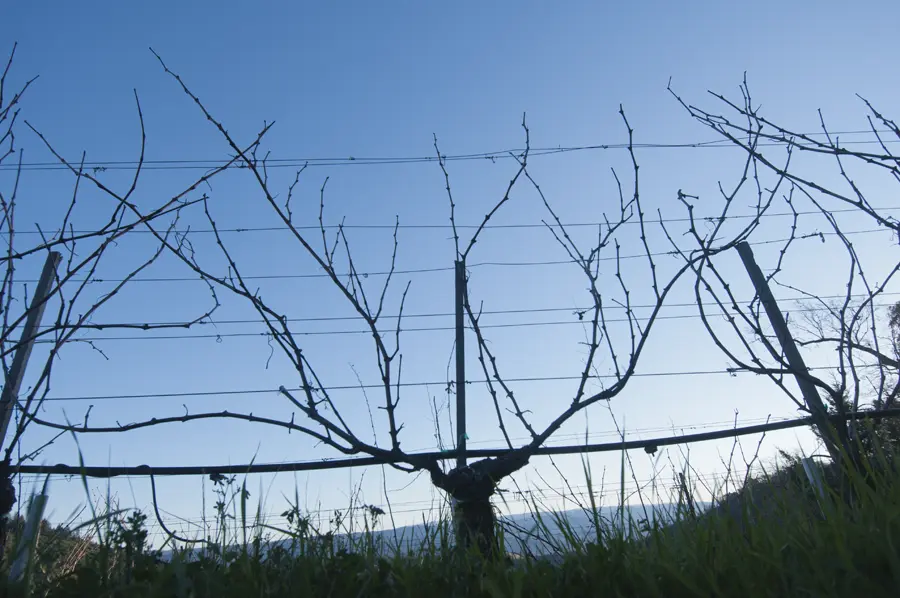
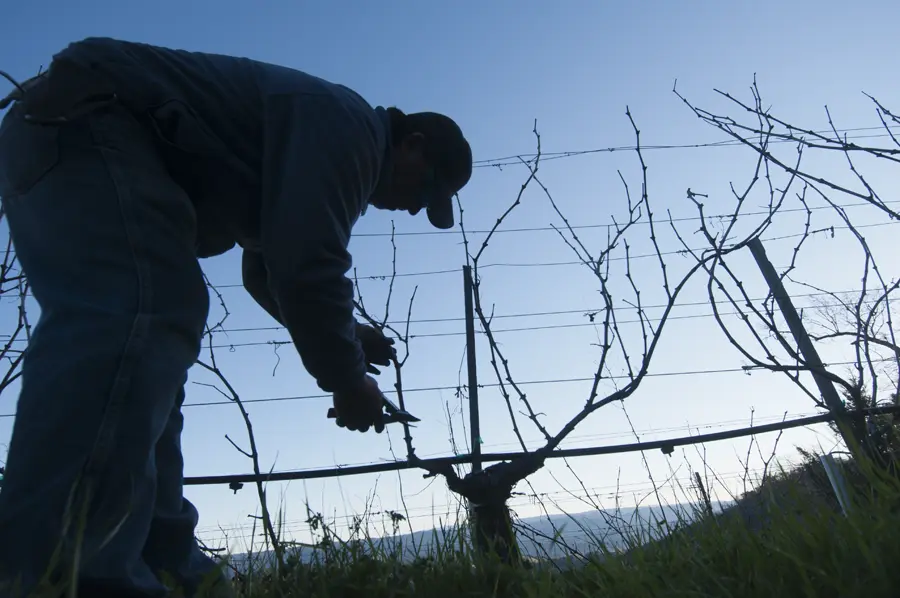
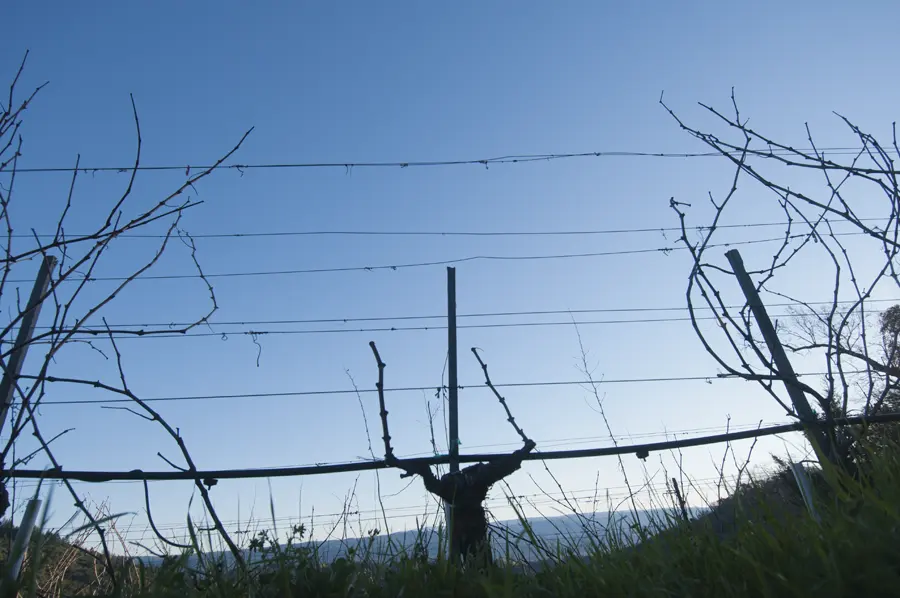
Pruning in the Cain Vineyard. Triptych of photos, Charles O’Rear, 2012
There are many nuances to each cut: the exact placement of the cut, its nearness to the permanent structure of the vine, the size of the cut, the angle of the blade, the sharpness of the blade, the placement of the cutting blade versus the holding anvil relative to the living tissue which will remain…and this is but a brief enumeration of some of the more obvious considerations—all of which are addressed in the instant the pruner makes the cut.
At Cain, our vines are relatively simple: each year, we will leave no more than two short canes (3-5 buds, each), and exceptionally, we might leave a 1-bud replacement spur in order to reconfigure the vine in coming years. Even this simple vine will require a minimum of four cuts, and more likely six or eight or ten—all of which are accomplished in a flash, seemingly in “the blink of an eye.” To see this, watch a video of Alberto Ramos pruning three vines—you’ll think you have gotten the idea—that is, until you try it for yourself.
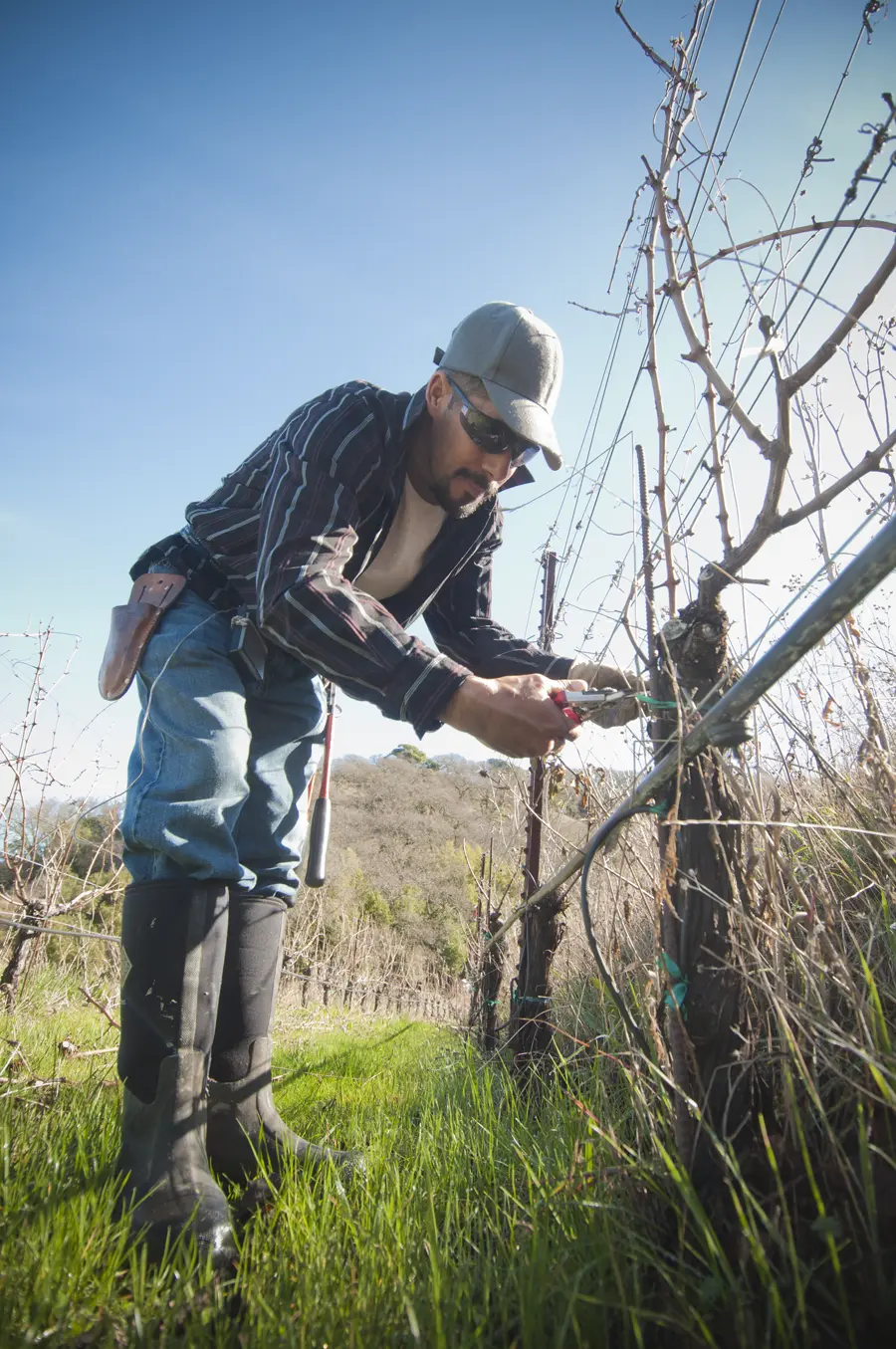
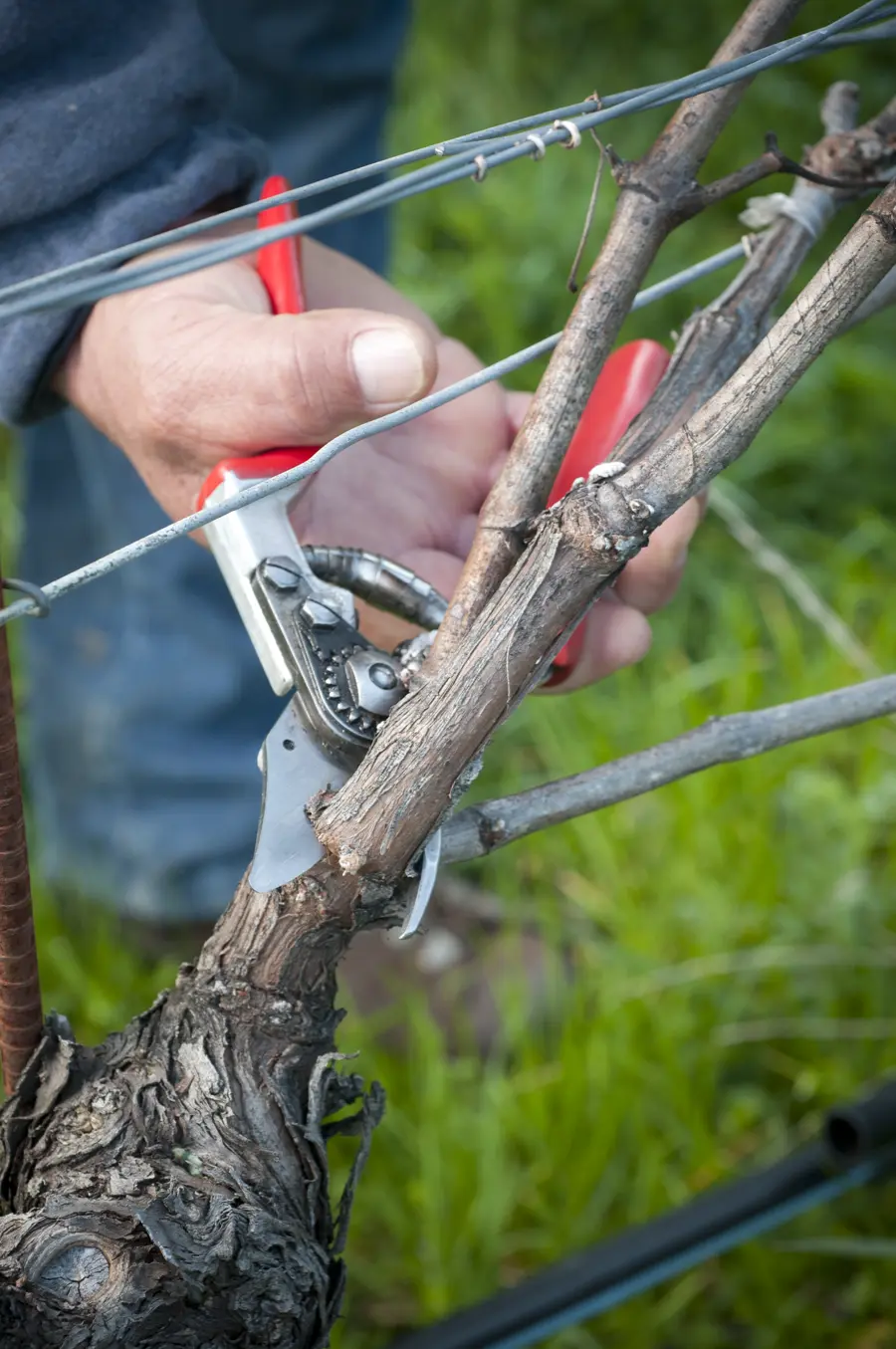
Above left: Since 2002, each year, Jose Antonio Torres-Ayala has pruned these same vines. Above Right: The defining cut: Gustavo’s shears remove last year’s growth, selecting just one cane, below, which will provide the buds for this year’s harvest, and the new cane for next year. Photographs, Charles O’Rear, 2012
All of this happens before thought begins. Through practice, it is deeply embedded in hand-eye coordination and in muscle-memory in much the same way a musician masters an instrument, or an athlete hones a skill that the rest of us could not begin to approach. But even if you practice, you will not do a beautiful job unless you both respect and love the craft. This is why, at Cain, each person prunes the same rows each year. Each year they will revisit the same vines they pruned the year before, see how each vine grew, and decide which buds to leave for the coming season. As you prune the same vines, year after year, a body of work begins to emerge.
This is the way I was shown in France, where, although I did not realize it, the tradition was already beginning to be lost. When I came to Mouton Rothschild in the summer of 1983, my first goal was to get to know the vineyard and the vignerons—not easy, since there were more than 50 blocks, some 30 vignerons, 20 vigneronnes, and 10 tractorists. Everyone was extremely friendly and welcoming. Just imagine how the party felt when the daily lunch swelled to over 400 people at harvest time! Each vigneron had a slightly different approach to his work. I looked for the one who focused on the plant, who had both energy and care, who was in love with his craft.
The man who taught me to prune, Jean Deyres, was said to be the most vaillant. At almost 50 years old, he nearly killed me—pruning steadily in freezing temperatures, before sunrise, after sunset, through rain, snow, sleet, and hail, day after day. Each day he would begin promptly and work steadily, stopping only for lunch at home (precisely 30 minutes), until he had reached his self-appointed goal of having pruned 1000 vines. In this way, “Jeanno” would prune all of the vines in his assigned blocks, and then have another couple of weeks to do additional paid work for the chateau. In the longer days of summer, and on weekends, he would go home to tend his garden and his chickens and rabbits. He even built his own house in this way. That is, when he was not responding to a call from his volunteer fire department, of which he was a member.
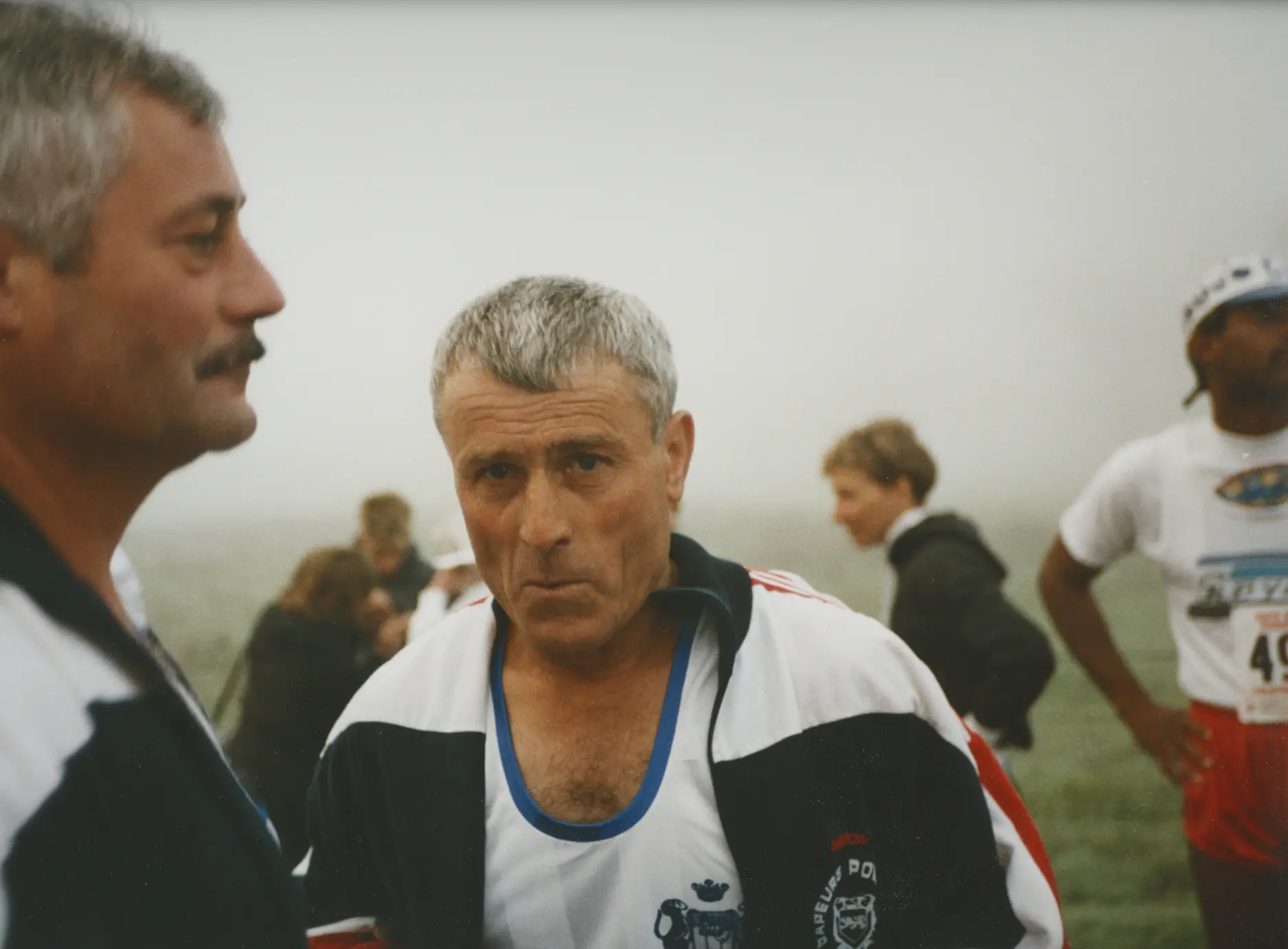
In most cases, Jeanno had pruned the very same vines for more than twenty years, ever since he had begun working at Mouton, after returning home from his service militaire in Algeria (1957). At first, he walked to work, or came on his bicycle. In the sixties, he got his first automobile. When Jean Deyres was taught to prune, it was an apprenticeship. He was assigned to follow in the same row behind the master vigneron as he pruned. The vigneron would make all of the principal cuts. The apprentice’s task would be to pull away last year’s growth and to trim the two canes that had been retained.
Eventually, the apprentice would be allowed to skip ahead and try his hand at pruning a vine—not “under his master’s watchful eye”—but always within the peripheral vision of the vigneron. If you know what to see, if it has been deeply embedded from a lifetime of muscle-memory and hand-eye coordination, you don’t think—a glimpse is all it takes.
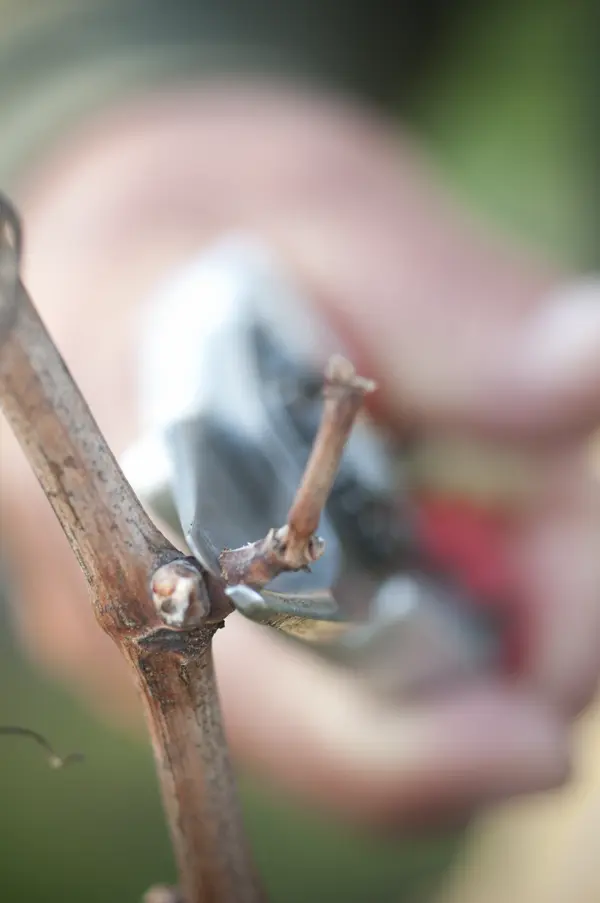

Above Left: This small lateral has two extra buds that could compete with and crowd the principal bud which will give us this year’s harvest. Above Right: Even this tiny bud must be removed. Photos, Charles O’Rear, 2012
That apprenticeship would last three years before the new vigneron was given a block of vines to tend on his own. The work is exacting, physically demanding, and relentless. It also carries with it the love and constancy associated with any repetitive practice: a pianist playing a Bach prelude for the 1000th time, a mother tending her baby, day by day.
The familiarity can be not only comforting, but it can allow one to go deeper. That is the beauty of it. When we listen to the Bach prelude, when we see the mother with her child, and when we walk in the vineyard, we know that there is much more than we can comprehend. But we can begin to appreciate the depth of work, the care, and the unstated knowledge and love that underlies what we can perceive.

—Christopher Howell, Wine Grower
April 2012
Click for a printable PDF of “Communiqué: On Pruning”
See more in this series: “Communiqué: On Flowering” | “Communiqué: on Ripening”


